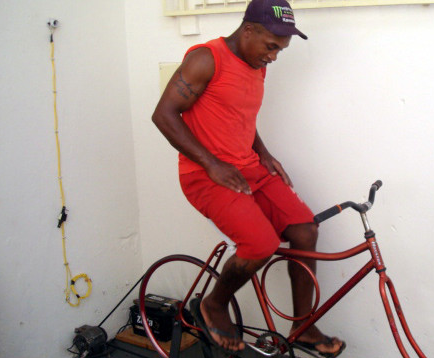August 11, 2014
During my presidency of the newly founded International Association of Drug Court Professionals (1999-2001), I visited a number of South American and Caribbean Countries. One country that appeared especially interested in the Drug Court Model was Brazil. I was encouraged to go on a State Department tour of several Brazilian cities in 1998 and again in 2001 and spoke to assemblies of Criminal Justice Professionals, and consulted with government officials in Rio de Janeiro, San Salvador, and San Pablo. Although I did my best to get the concept of Drug Court across to those officials, the huge numbers of drug users and the lack of substantial resources was discouraging. I’m not sure what the status of Drug Courts in Brazil is today, but would be surprised to find anything more than a Drug Court demonstration project in place.
That is my feeling about Drug Court in Brazil and other developing Countries (as I described in “No.7 in a Series”).Then again, I read a CNN News story in 2012 about a Brazilian Judicial Innovator that turned my head (commented on in a 2012 article in Reentry Court Solutions).
“Jose Henrique Mallmann, a Brazilian Judge in Santa Rita do Sapucai was looking for a way to encourage prisoners to give back to their community. In a Google search he came across a story of an American gym that used the energy from exercise bikes to power the club’s lights. Today there are four bicycles that require 10 hours of pedaling to fully charge one battery. The energy is enough to power 10 street lamps, out of 34 lamps that provide light for the plaza. Prisoners earn one day off their sentence with every 16 hours of pedaling” (CNN News story).
It reminded me of the obvious. You don’t need to import foreign programs and structures to develop innovative reform programs. What’s important is the willingness of judges and others in power, to break away from conventional western thinking and embrace those critical concepts of behavior modification that work in every culture and community in the world. Incentives, of course, are one tool that can be used to turn offenders away from crime. It’s not a panacea, but it is important that the court and criminal justice system pay attention to all the elements of successful community-based reform.
Drug Court has a role to play in the International Community, as a guidepost to successful community- based reform in modern societies, but its not the only model for other cultures to follow. Communities need to create their own structures and programs, and when appropriate, adapt drug court concepts to their own circumstances.
Finally, I’m more in awe of judicial innovators like Judge Mallman than I am of his more conventional drug court brethren in the U.S. In fact, It may be that looking outside the U.S. will ultimately provide us with the important community-based reforms we will need in the future.
…………………………………………………………………


